Have you heard about the benefits of calendula? This cheerful little flower packs a powerful punch when it comes to health benefits. From soothing skin irritations to boosting your immune system, calendula is more than just a pretty face. Ever wondered why your grandma swears by calendula for every ailment? Trust her wisdom when it comes to the calendula benefits. This vibrant flower is a go-to solution for everything from skin woes to digestive issues.
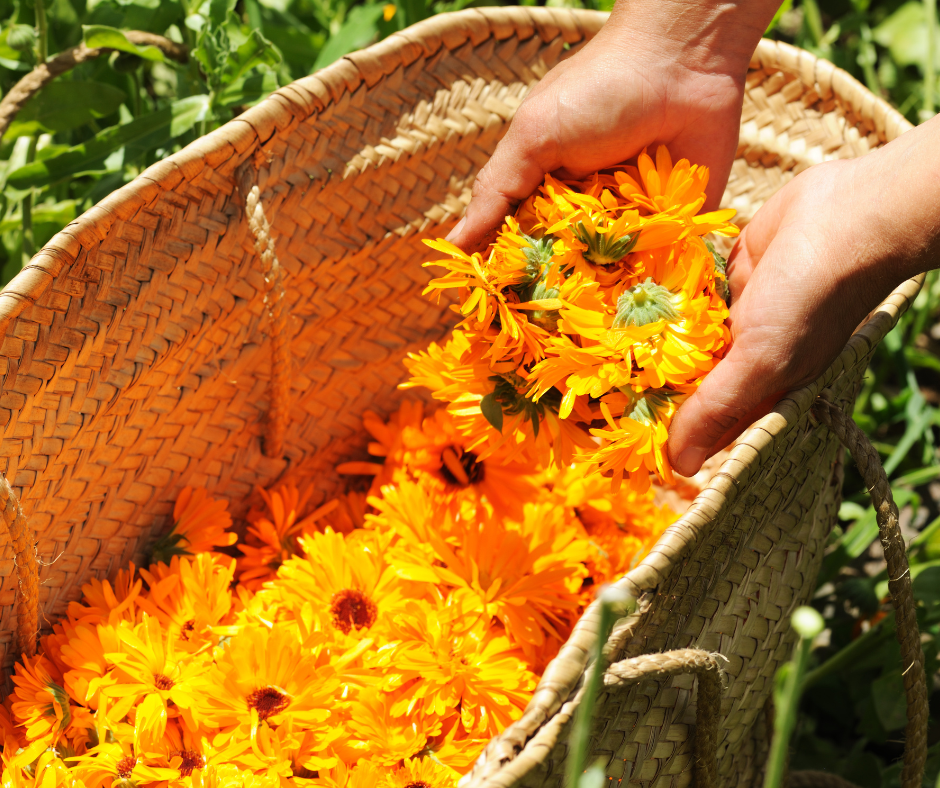
What is Calendula?
Calendula is not just a pretty face in the garden—it’s a flowering plant with a rich history and a multitude of uses. Known for its bright yellow-orange blooms, calendula has charmed its way into the hearts of gardeners and herbalists alike. From skincare products to soothing teas, the benefits of calendula are just waiting to be discovered.
Botanical Background
Calendula, often called pot marigold, belongs to the Asteraceae family, which is the same family as daisies and sunflowers. Its scientific name, Calendula officinalis, hints at its long-standing use in traditional medicine. This flowering plant is native to Southern Europe but has spread globally, finding its place in many vegetable gardens as a companion plant.
Some fun facts about its botanical attributes:
- Calendula flowers boast vibrant hues ranging from bright yellow to deep orange.
- It’s an annual plant, meaning it completes its life cycle in one year but comes back effortlessly from seed each season.
- The calendula petals are edible and often used to add color to salads and dishes.
Cultural Significance
Calendula has quite the resume when it comes to cultural importance. It has been cherished for centuries across various societies for its medicinal uses. Ancient Greeks and Romans used calendula flowers in religious rituals and ceremonies. They believed it could bring good luck and protection from evil intentions.
In medieval Europe, calendula was a staple in herbal medicine. It was commonly used for its anti-inflammatory properties and as a natural way to address health issues like sore throats and skin irritations. Calendula’s antibacterial properties made it a popular choice for treating wound healing and preventing free radical damage.
Nowadays, the health benefits of calendula extend into modern skincare and wellness products. From creams to oils, its soothing qualities are ideal for sensitive skin, helping with conditions like diaper rash and various skin irritations. The benefits of calendula tea are also recognized for promoting immune system health and reducing inflammation.
Calendula’s journey from ancient times to modern-day use showcases its versatility and enduring appeal. It’s a reminder of how natural ingredients have been woven into the fabric of cultural and medicinal practices, proving that sometimes the best remedies are those that have stood the test of time.

How to Identify Calendula
Ah, calendula! This delightful flowering plant is more than just a pretty face in your garden. Whether you’re exploring calendula benefits for skin or wondering how it ends up in your herbal tea collection, it’s essential to know how to spot this wonder plant.
Physical Characteristics
Calendula, or Calendula officinalis, better known as the pot marigold, flaunts a spectrum of nature’s fiery shades. Picture bright yellow-orange flowers that beam like little suns against the green landscape. These flowers are almost too perfect, with petal arrangements resembling the rays emitting from a sunburst.
Let’s break it down a little:
- Flower Color: Typically, they range from sunny yellows to bold oranges. They stand out with their saturated hues.
- Leaf Shape: The leaves are oblong or lance-shaped, often with a soft, fuzzy texture.
- Plant Height: Calendula plants usually reach a modest height of about 1 to 2 feet, making them a lovely addition to any vegetable or flower garden.
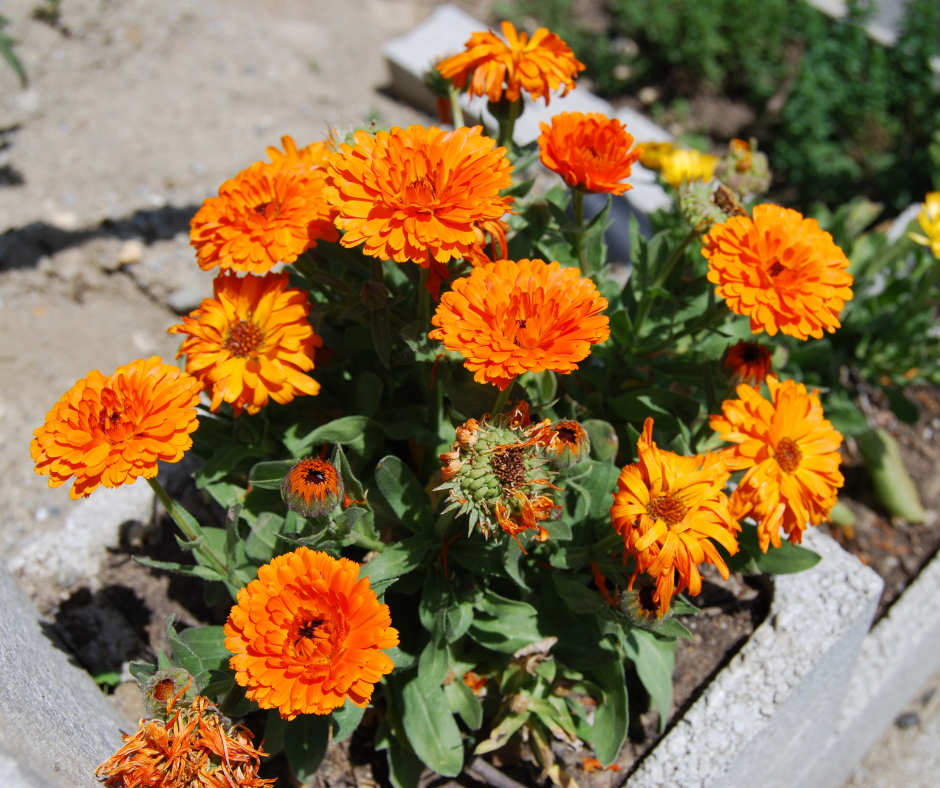
Growth Conditions
If you’re thinking of growing these beauties, let’s chat about their ideal setting—after all, even the happiest plants need a certain level of TLC. When growing calendula seeds:
- Sunlight: Calendula loves bright, full sunlight but can tolerate partial shade. Think sunny days when planning their spot.
- Soil Type: They’re not fussy eaters. Rich, well-drained soil does wonders for them. But they’ve been known to thrive in ordinary garden soil too.
- Climate: Originating from Southern Europe, calendulas enjoy cooler weather. They can handle some frost, just don’t leave them out in the cold too long.

Benefits of Calendula
Calendula, often known as pot marigold, is more than just a pretty flower. With its bright yellow-orange blooms, calendula officinalis is a powerhouse of nature’s goodness packed into tiny petals. Let’s explore the colorful benefits of calendula and how it can make a difference in your life.
Skin Healing Properties
Calendula is a miracle worker when it comes to skin irritations. Feeling a little burnt or cut? Calendula can help soothe and heal those pesky ailments. It has been used historically in medicinal preparations to treat various skin conditions such as cuts, burns, and even diaper rash. Calendula oil, often found in natural skincare products, is a common ingredient for its wound healing benefits. Its ability to promote skin hydration and reduce inflammation makes it ideal for sensitive skin.
Anti-Inflammatory Effects
When it comes to anti-inflammatory properties, calendula stands strong. It works like a tiny firefighter, helping to reduce inflammation and calm irritated skin. The anti-inflammatory effects are so powerful, calendula is often recommended for chronic conditions where inflammation is a key concern. Think of it as the aloe vera of herbal remedies that tackles not just a small area of skin but can also assist in managing muscle spasms and oxidative stress.
Antimicrobial Benefits
Calendula flowers are not just pretty to look at—they pack a punch when it comes to fighting off bacteria and fungi. With their natural antibacterial properties, calendula is commonly used in rash creams and ointments to help prevent infections. Having antimicrobial properties, calendula can keep your skin safe from pesky pathogens, making it a superhero in the world of natural ingredients.
Boosting Immune Function
Boosting your immune system with calendula is like giving your body a flower-powered shield. Calendula benefits go beyond the skin; it helps enhance immune responses, making it a significant player in herbal medicine. For those seeking a natural way to stay healthy, calendula tea might just be your new go-to. Packed with antioxidants, it helps combat free radical damage and promotes overall health.
Aromatherapy Advantages
The pleasant aroma of calendula essential oil can do wonders for your mood. Using calendula in aromatherapy can have mood-enhancing properties, lifting your spirits just like the sight of a sunny day. Incorporating this essential oil into your routine is like having a personal sunshine boost whenever you need it. It’s a natural, soothing way to enhance mental wellbeing and fend off the blues.
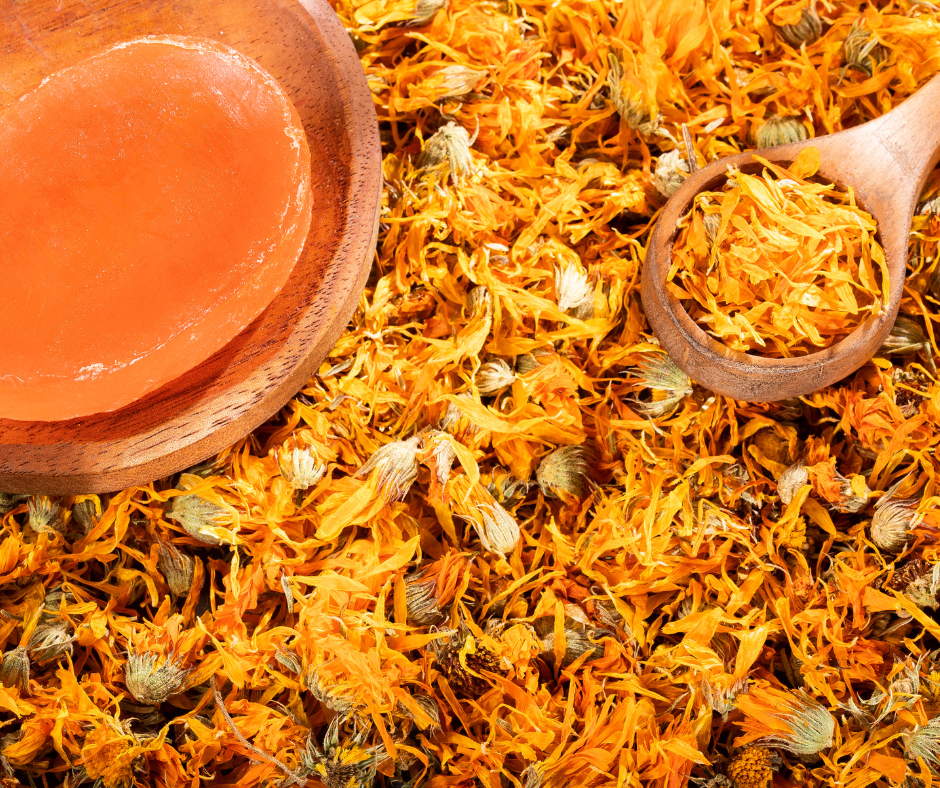
How to Use Calendula
Calendula, also known as pot marigold, is a flowering plant that’s not only beautiful but also packed with health benefits. Known for its bright yellow-orange flowers, calendula boasts a variety of uses, from culinary treats to calming skincare remedies. If you’re curious about how to incorporate the calendula benefits into your life, keep reading!
Culinary Applications
Did you know you can eat calendula petals? These vibrant petals are not just a pretty face in the vegetable garden. They’re a nutritious addition to your diet and have been used in historical use for centuries. Here’s how you can add some flavor and flair to your meals:
- Salads: Sprinkle calendula petals on your salads for a splash of color and a mild peppery flavor.
- Teas: Brew a cup of calendula tea using dried flowers for a comforting beverage that’s said to support the immune system and offer other health benefits of calendula.
- Soups and Rice Dishes: Toss the petals into soups or rice for a pop of color and to harness their anti-inflammatory properties.
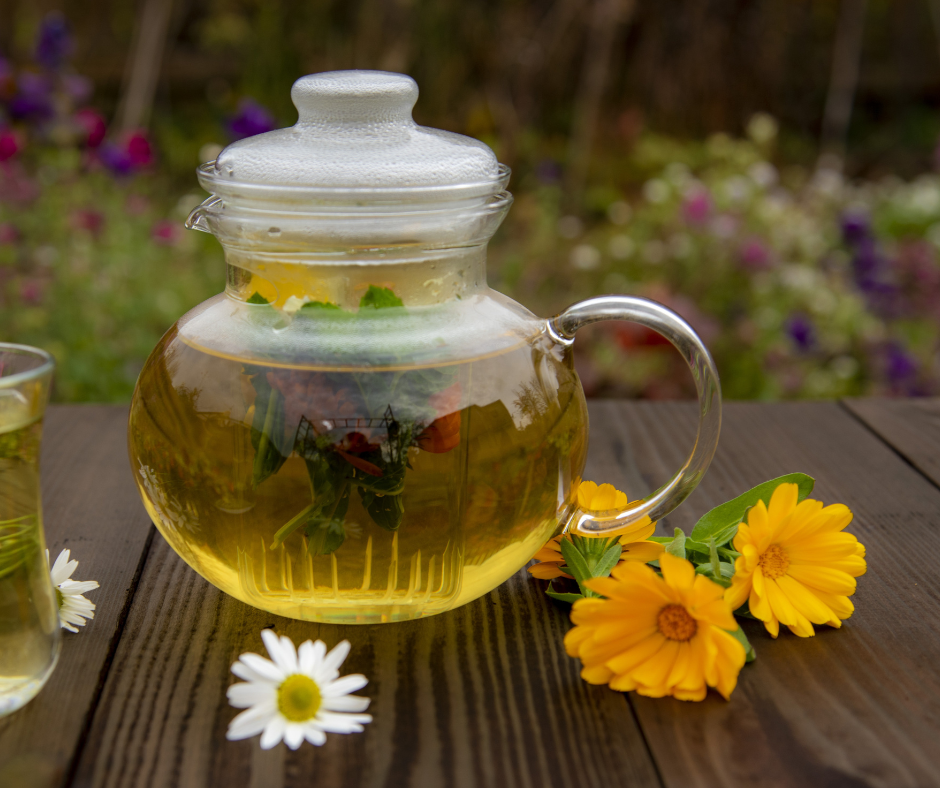
Topical Uses
Calendula is a superstar in skincare products, loved for its soothing properties and benefits to skin health. Here’s how you can create your own natural products at home:
- Calendula-Infused Oils: Combine calendula flowers with a carrier oil like olive oil or coconut oil. Let it infuse in a sunny spot for a few weeks, then use it as a calming oil for dry skin or to help with wound healing.
- Salves and Creams: Create a rich calendula cream by mixing the infused oil with beeswax and essential oils. This can be perfect for treating skin irritations like diaper rash or insect bites.
- Ointment for Sensitive Skin: For those with sensitive skin, a simple calendula ointment applied to irritated skin may provide relief without the harsh chemicals found in some commercial creams.
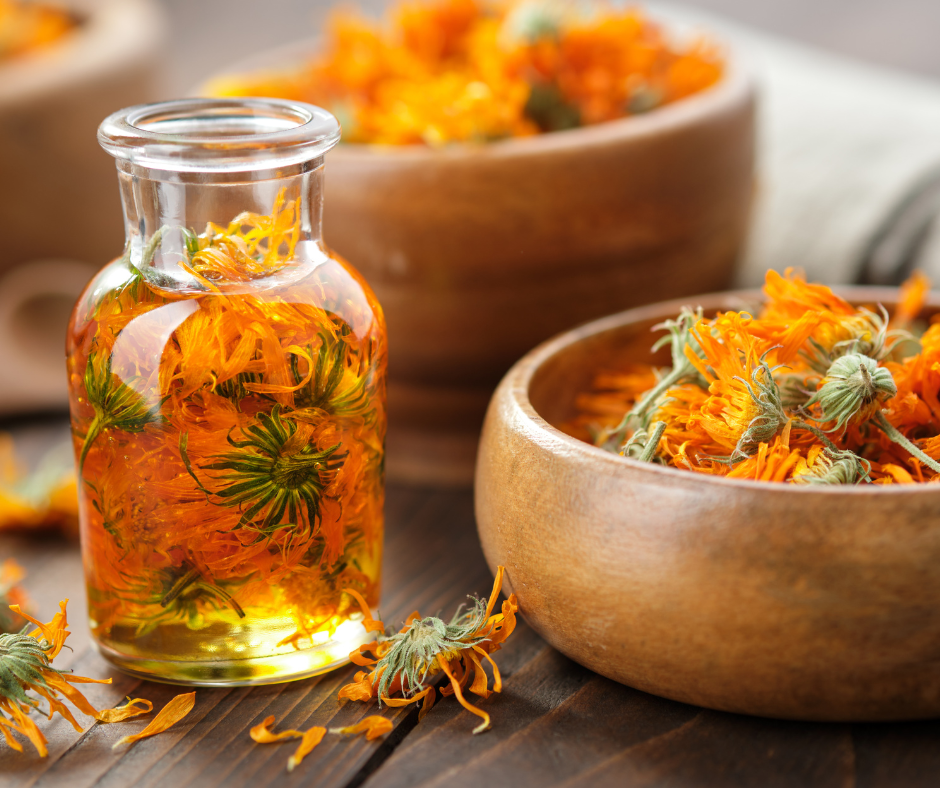
Herbal Remedies
For centuries, calendula has been a go-to in herbal remedies thanks to its antimicrobial properties and healing properties. Try these simple homemade remedies for common ailments:
- Calendula Tea for Sore Throats: Gargle benefits of calendula tea to soothe a sore throat. The tea’s antibacterial properties can provide relief and reduce inflammation.
- Salve for Skin Conditions: Make a salve using jojoba oil and aloe vera to treat various skin conditions like eczema or sun protection for mild burns.
Experimenting with calendula products is a fun way to explore the medicinal uses of this flowering plant. Just be sure to do a patch test first to avoid any allergic reaction. Isn’t it fascinating how this delightful flower from the asteraceae family can enhance your kitchen and your skincare routine?
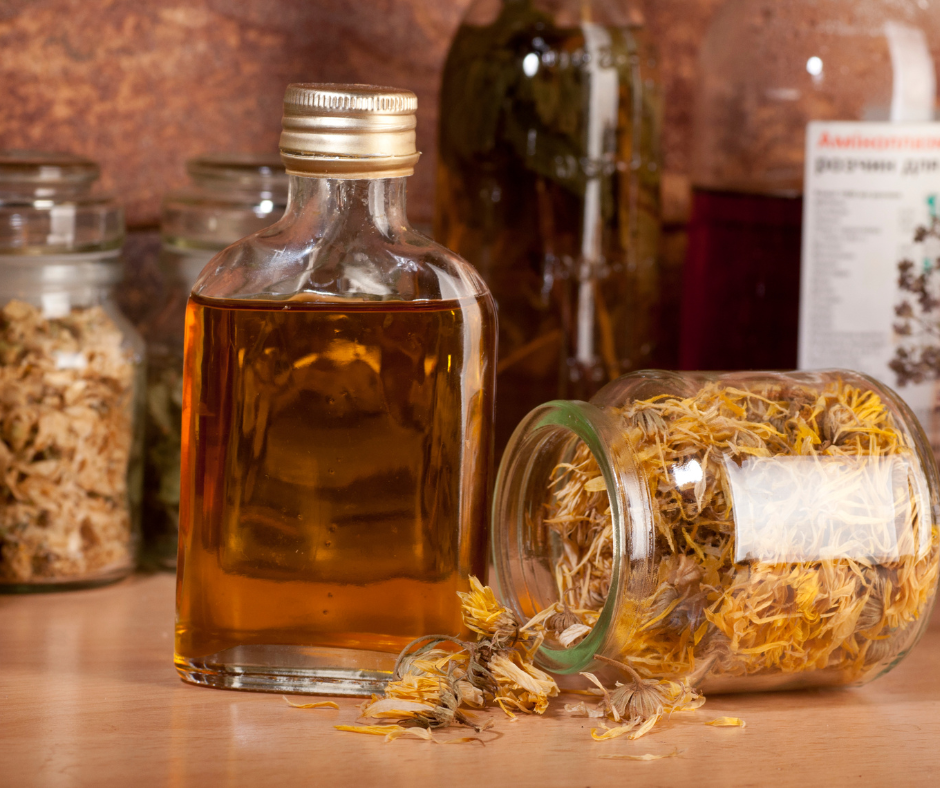

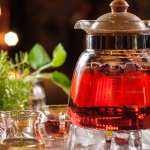
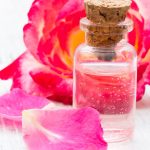
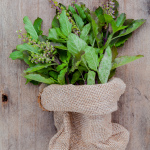
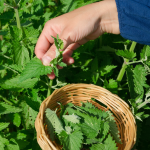








Leave a Reply